Picture this: You’re on an exciting treasure hunt. But instead of gold and jewels, you’re searching for powerful leads that can skyrocket your business. Think of your lead generation strategies as maps, leading you straight to a chest filled with potential customers. Ready to set sail on this thrilling journey of leads and lead generation? Get ready to be amazed!
Key Takeaways
- Maximize leads with an effective lead generation strategy
- Identify target audience, select channels and create compelling offers for success
- Leverage sales & marketing teams to maximize conversion rates using automation, content marketing & social media tactics
Understanding Lead Generation: A Primer

Imagine lead generation as a vibrant city, full of potential customers just waiting to be discovered. Each of these prospects has their own unique interests and stories to share. To find the right people to convert, you need a solid lead generation strategy. By carefully planning and targeting your campaigns, you can efficiently reach high-quality prospects. Don’t forget to highlight the benefits of your products or services to both marketing and sales qualified leads. Stand out from the crowd and make your offerings shine!
The Anatomy of a Sales Qualified Lead
Let’s take a closer look at the qualities of a top-rated resident in our lead generation city – the Sales Qualified Lead (SQL). Think of an SQL as someone who has already found your buried treasure and is ready to start digging. These leads have shown a strong interest in becoming buyers and are eager to connect with sales personnel.
To better understand this journey, there is something called ‘lead scoring’ that acts like a compass, guiding you towards potential conversions by assigning points based on the actions taken by these potential customers. This makes it easier to distinguish between high-quality leads that are likely to become paying customers, and standard qualified leads that may not be ready for purchase just yet.
Crafting Your Lead Generation Strategy
The key to successful lead generation lies in constructing an effective strategy – and that requires figuring out who you’re targeting, deciding which channels are best suited for your goals, and crafting engaging offers. Here’s what we need to know more about each step.
First off is understanding the target audience. By doing this research one can create better-suited material designed to draw potential customers into their offerings. Secondly, comes selecting the appropriate outlets or platforms where prospects may be found—this decision should factor in things like budget constraints as well as desired reach size of the campaign itself. Finally, there are developing enticing incentives.
Identifying Your Target Audience
Understanding your target audience involves in-depth research and data analysis. You need to gather demographic information such as age, gender, geographic location, income level, and educational background. But that’s just the beginning. Psychographic factors such as interests, attitudes, behaviors, and lifestyle preferences also play a crucial role. It’s equally important to understand the pain points and challenges your potential customers face, and how your product or service can address these issues. Remember, people don’t just purchase products – they buy solutions to their problems. Additionally, understanding your audience’s preferred communication channels and media consumption habits can enable you to customize your approach, making your marketing messages more effective and your lead generation efforts more successful. This comprehensive understanding of your target audience serves as a reliable compass, pointing you towards your treasure – high-quality leads.
Selecting Appropriate Channels
Once you have your map in hand, it’s important to select the best routes to achieve your desired outcome: generating leads. Choosing the right channels for lead generation requires careful consideration. These channels need to be tailored to attract the right people and yield beneficial results.
There are a variety of options for gathering leads, such as events, websites, social media platforms, and advertising tools. Each of these options offers its own benefits in terms of attracting potential customers or audiences.
However, it’s not enough to rely on just one channel. To truly succeed, you need to carefully select and combine multiple channels that work together seamlessly. It’s important to tailor these sources to suit individual preferences and ensure a good return on investment, among other factors.
By choosing the right routes and optimizing your lead generation efforts, you can pave the way to success in obtaining valuable leads.
Enhancing the Impact of Compelling Offers
While compelling offers are a strong lead magnet, it’s essential to ensure that these offers hold genuine value for your audience. Offers that appeal to the self-interest of potential customers tend to be most effective. For example, a free eBook that solves a problem for the user, a webinar that provides valuable insights, or an exclusive membership offering added perks can entice prospects to share their contact information. The key lies in understanding what is valuable to your audience, and tailoring your offers accordingly. Moreover, these offers need to be communicated in an engaging and persuasive manner. A compelling headline, an attractive visual, and a persuasive call-to-action can significantly enhance the effectiveness of your offers, making them irresistible for your leads.
Top B2B Marketing Tactics for Lead Generation
Let’s embark on our journey to success armed with a clear roadmap and objectives. Navigating the complex world of B2B marketing can be challenging, but fear not! We have a trusted compass in the form of expert-favored lead generation strategies.
These tactics will serve as experienced guides, helping us navigate the ever-changing maze of acquiring leads. From leveraging solid referrals to tapping into the vast reach of social media platforms or hosting webinars/virtual events, we have a variety of approaches to achieve our B2B lead generation goals. Despite the initial intimidating appearance, these top B2B marketing techniques make it easy to find an effective path forward.
Leveraging Solid Referrals
Referrals are a highly effective lead generation strategy – they come with built-in trust, making the lead more likely to convert. People tend to trust recommendations from their network more than any advertisement. Therefore, having a strong referral program in place can significantly contribute to lead generation. This strategy involves encouraging your existing customer base to refer your product or service to their network in exchange for perks like discounts, exclusive features, or other incentives.
Tapping into Social Media Platforms
Social media platforms, such as LinkedIn, Twitter, and Facebook, have immense reach and offer a plethora of opportunities for B2B marketers. Being active on these platforms can not only increase brand awareness but also generate qualified leads. For B2B, LinkedIn is my go to in addition to the LinkedIn Groups.
Regularly sharing content that adds value to your audience, engaging with followers, participating in industry-related discussions, and using paid advertising tools provided by these platforms, can all contribute to effective lead generation.
Hosting Webinars or Virtual Events
Webinars and virtual events offer an interactive way to reach out to potential leads. They provide a platform to demonstrate your expertise, offer value to your audience, and subtly promote your products or services. To attract attendees, it’s crucial to choose topics that are relevant to your audience and offer solutions to their problems. Additionally, these events provide an excellent opportunity to collect contact details of potential leads who register to attend.
By incorporating these strategies into your B2B marketing plan, you can effectively navigate the complex world of lead generation and successfully attract and convert high-quality leads.
Tools That Power Lead Generation

Lead generators are in need of a toolkit full of resources and technologies to simplify their lead generation process. Automation and lead scoring systems play vital roles as two essential tools from this collection.
The automation system is particularly advantageous since it can streamline the entire procedure, while also allowing for deeper analysis with the help of advanced data-driven insights derived from these toolsets. Leading score frameworks permit for optimal categorization based on customer segmentations that drive better decision making regarding leads or potential prospects needed within specific markets or areas.
Enhancing Efficiency with Automation
Automation is a valuable tool in the lead generation process and can be used for many purposes. It helps to streamline operations, reduce human errors and increase productivity, which ultimately leads to higher profits. Automation allows us to score, prioritize and nurture leads while also providing personalization opportunities through segmenting them appropriately. All of this combined makes automation invaluable when it comes to generating high-quality leads efficiently on an ongoing basis.
Lead Scoring Systems
Lead scoring is a powerful tool to guide us on the journey of lead generation. As mentioned before, this method provides an effective way for prioritizing leads according to their actions and behavior as it classifies them into ‘hot’, ‘100%’, ’A’ or ‘warm’ depending on how likely they are to convert.
With this compass in hand, we can confidently march forward with our mission: focusing all energies on those most promising prospects that have been identified by the system’s score calculation!
Engaging Potential Leads Through Content Marketing
Content marketing stands as a bustling hub within the vast metropolis of lead generation. This vibrant district is teeming with potential customers who are actively seeking valuable, insightful information provided by businesses. By crafting compelling, high-quality content pertaining to their products or services, businesses are enabled to advance through every stage of the sales process. Beginning from enhancing brand visibility and recognition, journeying through lead generation and conversion, and culminating in nurturing customer loyalty, content marketing holds immense potential. It serves as a potent tool that effectively reels in leads into your sales funnel.
Infusing your content marketing strategy with elements such as blogs, infographics, videos, case studies, and white papers, tailoring each to resonate with your target audience’s pain points and aspirations, can significantly amplify its impact. Meanwhile, ensuring consistent delivery of value through your content can help establish your brand as a trusted thought leader in your industry. Moreover, by leveraging Search Engine Optimization strategies in your content creation, you can widen your reach and visibility, making it easier for potential leads to discover you.
Thus, adopting an effective content marketing strategy is no longer a mere option, but an essential component for organizations striving to thrive in this digital age. The meticulously created content can act as a magnetic force, constantly attracting and pulling in leads towards your business, and steadily guiding them through the convoluted maze of the buyer’s journey towards conversion.
Nurturing Leads to Improve Conversion Rates

The process of lead generation can be compared to the careful nurturing of a gardener as they tend to their plants, with the ultimate aim of increasing conversion rates. In the same way a gardener tailors their care to suit the unique needs of each plant, successful lead generation requires a personal touch. Each lead’s journey through the sales funnel should be guided by content and communication that is custom-tailored to their specific needs. By providing these unique, personalized experiences, we can ensure that potential customers are better equipped to reach their full potential. In doing so, our lead generation efforts will yield much greater success compared to more traditional methods that lack this level of personalization throughout the customer journey.
Boosting Visibility with Search Engine Optimization
As we continue our progress, SEO is presented to us in the shape of a lively marketplace. The same way a prominently placed store gains more customers and exposure, optimizing an online presence can bring about much needed attention and possibly even leads for your business.
Many B2B professionals are certain that search engine optimization plays a huge role when it comes to generating quality prospects. In order not to miss out on this opportunity, one must take care of keyword research as well as create optimised landing pages with fast loading speeds – all these measures help ensure businesses get spotted amongst their competition. Thus drawing potential clients closer.
Social Media’s Role in Lead Generation
We now head to the buzzing area of social media where businesses have great chances for creating leads. Just like in a town square that brings people together, these platforms allow companies to reach out and connect with their target audience thus producing high-value leads.
Using techniques such as organic posts, promoted ads or both can help your brand get more potential customers into action while providing an opportunity to boost your returns through top quality lead generation efforts via social media channels.
Measuring Success: Lead Generation Metrics

As we prepare to reach the endpoint of our voyage, it’s time for us to review what we’ve achieved. How can success be gauged when evaluating our lead generation attempts? The answer lies in metrics associated with lead generation: such as how many leads have been gained, conversion rate, average deal size and so forth. By observing these variables over a period of time, adjustments can be made accordingly on route ensuring progress is made towards desired outcomes. To go one step further, sales cycle length, response times plus customer lifetime value are all key considerations too, if you know exactly where your leads come from and why people buy then it could increase both profits and longevity making this criteria critical when monitoring progression from lead generation efforts.
Leveraging Sales and Marketing Teams for Better Results
As we make progress towards our goal of creating more lead generation, the importance of having our sales and marketing departments work together should not be overlooked. The partnership between these teams is pivotal in augmenting the results from lead gen activities.
Organizations that have tight knit cooperation among their sales and marketing groups typically experience greater growth monetarily due to many advantages such as: hassle-free shiftover of leads, joint operations, mutual access to both communication systems and techniques which often result in shorter sale cycles leading to an uptick in conversion rates too!
Innovative Lead Generation Trends to Watch
The advent of technology has profoundly transformed the lead generation landscape. Currently, we’re seeing automation take center stage, eliminating manual tasks and fast-tracking processes. Marketing automation tools are being utilized to automate repetitive tasks such as email marketing, social media posting, and ad campaigns – freeing up valuable time for marketers. Similarly, the role of Artificial Intelligence (AI) is rapidly evolving, it’s being leveraged to predict customer behavior, personalize interactions, and even automate lead scoring.
Content marketing continues to be a powerful strategy, with more businesses investing in blogs, e-books, webinars, and infographics to educate their audience, build trust, and gradually nudge them down the sales funnel. SEO has become more sophisticated too, with a greater focus on semantic search, mobile-friendliness, and local SEO.
As for social media advertising, it’s no longer just about brand awareness. Now, it’s a major player in the lead generation field, with platforms like LinkedIn, Facebook, and Twitter offering advanced targeting options to reach the right audience and capture high-quality leads.
These trends reflect a larger shift towards more personalized, targeted, and technology-driven strategies in lead generation. As we move forward, we must continually adapt and innovate to stay competitive in this dynamic field. The future of lead generation holds exciting possibilities, and it’s up to us to harness them effectively.
Summary
In conclusion, the process of lead generation is a dynamic, multi-faceted endeavor that requires careful strategy, continuous evaluation, and flexible adaptation to emerging trends. By fostering a harmonious collaboration between sales and marketing teams, leveraging powerful techniques, and staying abreast of innovative trends like automation and AI, businesses can unlock new levels of growth and success. The journey through the ‘town’ of lead generation may be complex, but it is an essential and rewarding voyage for any business seeking to thrive in today’s digital marketplace.
Frequently Asked Questions
What does it mean to generate leads?
Generating leads is the process of igniting interest in a product or service in order to make sales. This is accomplished by gathering contact information online, often using forms and various marketing techniques.
How are leads generated?
Lead generation involves using various methods to capture potential customers’ interest. This can include offering content in exchange for contact information, providing job applications, blogging, posting coupons, and organizing live events or online materials. The goal is to nurture these prospects until they become paying customers.
How do you calculate the number of leads generated?
To calculate the number of leads generated from a specific campaign, simply divide the total number of sales by the cost of lead generation. This cost includes expenses related to impressions and any follow-up activities.
What is lead generation and why is it important?
Lead generation is an important tool that businesses use to connect with potential clients and drive growth. By engaging with potential buyers through lead generation, companies can turn them into customers in the future.
What is a Sales Qualified Lead (SQL)?
A Sales Qualified Lead is a qualified lead who has shown interest and is now ready to receive contact from the sales team. These potential customers represent opportunities for business engagement.
Subscribe today not to miss a thing.
My blog posts of the week emailed to you in a nice little (email) package.

